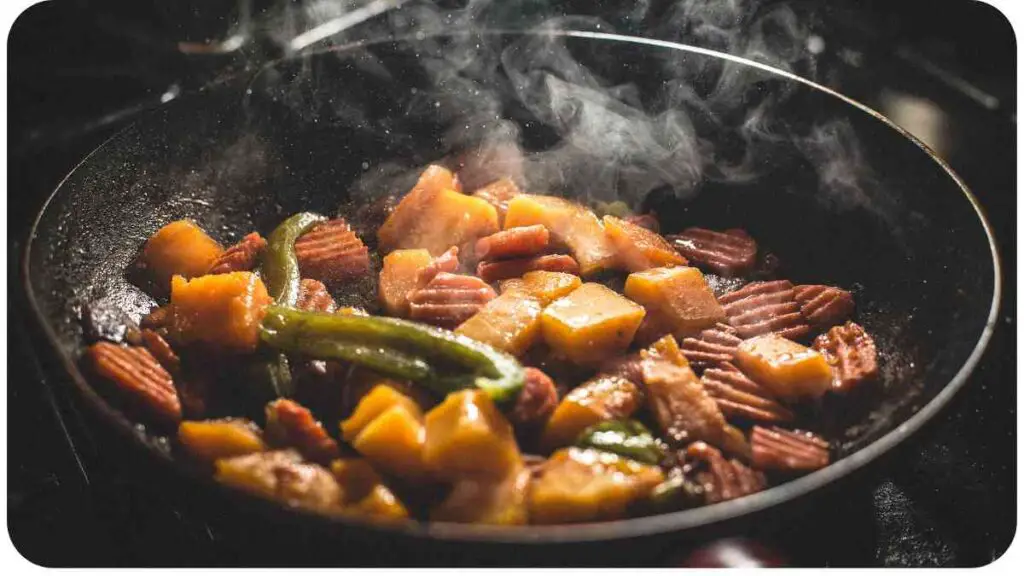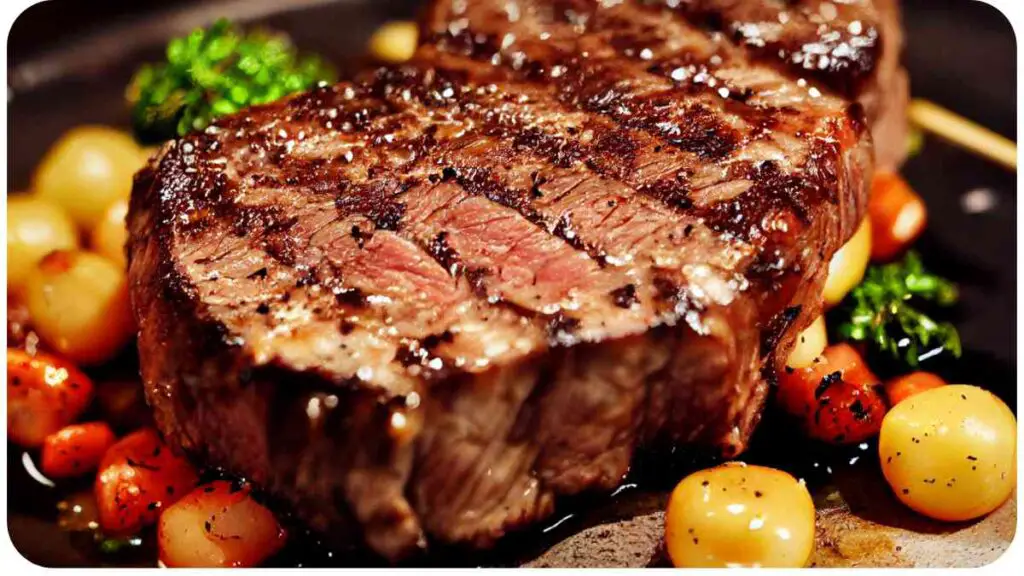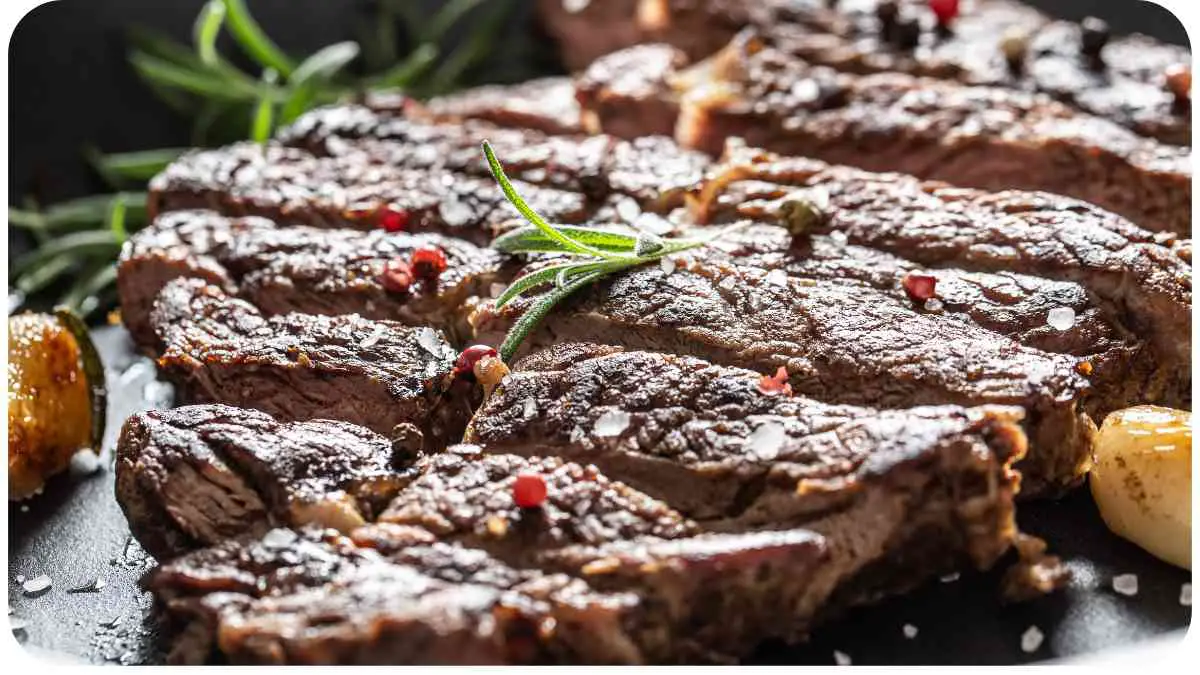Cooking is a fundamental human activity that has evolved over centuries. While it enhances the flavors and textures of food, concerns have been raised about whether cooking destroys essential nutrients in the process.
In this comprehensive guide, we will explore the science behind nutrient loss during cooking, examine the retention levels of common cooked foods, discuss various cooking methods and their impact on nutrient preservation, share tips for maximizing nutrient retention, debunk popular misconceptions, and provide you with actionable takeaways.
| Takeaways |
| Cooking can result in nutrient loss, but the extent varies based on factors such as method, time, and temperature. |
| Steaming and stir-frying are cooking methods that can help preserve nutrients better than boiling or frying. |
| Minimize peeling and chopping to retain nutrients in the skin and reduce surface area exposed to heat. |
| Controlling cooking time and temperature is key to preventing excessive nutrient degradation. |
| Pairing foods strategically can enhance nutrient absorption and optimize nutritional benefits. |
| Raw food diets may not necessarily be superior to cooked food as cooking can enhance nutrient availability. |
| Microwaving is a quick and efficient cooking method that can retain more nutrients compared to other methods. |
| Incorporate a balance of raw and cooked foods to enjoy a wide range of nutrients. |
2. The Science Behind Nutrient Loss during Cooking
2.1 Heat and Nutrient Degradation
Heat is the primary factor that contributes to nutrient loss during cooking. High temperatures can degrade certain vitamins, break down proteins, and reduce the bioavailability of minerals. However, not all nutrients are equally affected by heat, and different cooking methods have varying impacts on nutrient preservation.
Nutrition myths often cloud our understanding of healthy eating. To debunk these misconceptions, we explore the truth behind common dietary fallacies. Learn more in our comprehensive guide on nutrition myths.
2.2 Water-Soluble Nutrients
Water-soluble vitamins, such as vitamin C and the B vitamins, are particularly vulnerable to heat and can be lost during cooking. Boiling and prolonged exposure to water are known to cause significant nutrient loss. However, methods like steaming and stir-frying with minimal water can help preserve these delicate vitamins to a greater extent.
2.3 Fat-Soluble Nutrients
In contrast to water-soluble vitamins, fat-soluble vitamins like vitamin A, D, E, and K are more stable during cooking. These vitamins are less likely to be lost compared to their water-soluble counterparts. However, some nutrient degradation can still occur with certain cooking methods.
3. Retention Levels of Commonly Cooked Foods

To better understand nutrient loss during cooking, it is essential to examine the retention levels of nutrients in commonly cooked foods. Let’s delve into the specific categories:
Proper storage of fruits and vegetables is crucial to preserving their freshness and nutritional value. Discover the best practices for fruit and veggie storage in our guide to storing your produce.
3.1 Vegetables
Vegetables are a staple in many people’s diets, so understanding how they fare during cooking is crucial. Green leafy vegetables, such as spinach and kale, can experience significant nutrient loss when cooked extensively. However, other vegetables, such as carrots and tomatoes, exhibit increased availability of certain nutrients when cooked. It is important to strike a balance between retaining nutrients and achieving desired textures.
Table: Nutrient Retention in Commonly Cooked Vegetables
| Vegetable | Cooking Method | Nutrient Retention |
| Spinach | Boiling | Low |
| Carrots | Steaming | High |
| Tomatoes | Roasting | Medium |
3.2 Fruits
Fruits add a vibrant and refreshing element to our meals. While most fruits are best consumed raw to obtain maximum nutrient benefits, some cooking methods can enhance certain aspects. For instance, cooking berries in a sauce can increase the bioavailability of antioxidants.
Table: Nutrient Retention in Commonly Cooked Fruits
| Fruit | Cooking Method | Nutrient Retention |
| Apples | Baking | Medium |
| Berries | Sauce | High |
| Oranges | Juicing | Low |
3.3 Meats and Fish
Proteins play a vital role in our diet, and how they are prepared can impact nutrient retention. While overcooking meat can result in nutrient losses, using cooking methods that retain moisture and minimize charring can help preserve nutrients.
Curious about organic foods and their benefits? Gain insights into the world of organic produce and what it means for your health. Explore the facts in ‘The Truth About Organic Foods‘ guide.
Table: Nutrient Retention in Commonly Cooked Meats and Fish
| Protein | Cooking Method | Nutrient Retention |
| Chicken | Grilling | Medium |
| Salmon | Baking | High |
| Beef | Stir-Frying | Low |
4. Cooking Methods and Nutrient Preservation
Understanding how different cooking methods affect nutrient preservation is crucial for maintaining a balanced diet. Let’s explore some popular cooking methods and their impact on nutrient retention:
4.1 Boiling
Boiling is a common cooking method that involves submerging food in water and heating it to its boiling point. While it may be convenient for certain foods, it can result in significant nutrient loss due to the prolonged exposure to water and high temperatures.
Table: Nutrient Retention in Boiled Foods
| Food | Nutrient Retention |
| Broccoli | Low |
| Potatoes | Medium |
| Eggs | High |
4.2 Steaming
Steaming is a gentle cooking method that involves using steam from boiling water to cook food. It helps retain both flavor and nutrients, making it an excellent option for preserving water-soluble vitamins and minerals.
Table: Nutrient Retention in Steamed Foods
| Food | Nutrient Retention |
| Cauliflower | High |
| Asparagus | High |
| Fish | High |
4.3 Frying
Frying involves cooking food in hot oil or fat. While it can create delicious textures and flavors, it also leads to higher calorie content and can result in nutrient loss, particularly when foods are deep-fried or overcooked.
Understanding food expiration dates is essential for food safety and minimizing waste. Learn how to decode those labels in our comprehensive guide on food expiration dates.
Table: Nutrient Retention in Fried Foods
| Food | Nutrient Retention |
| French Fries | Low |
| Chicken Fillet | Medium |
| Zucchini | High |
4.4 Roasting and Grilling

Roasting and grilling are dry-heat cooking methods that can add depth of flavor to various foods. However, they can also lead to nutrient losses due to the higher temperatures involved. It is best to monitor cooking times and temperatures to prevent excessive nutrient degradation.
Table: Nutrient Retention in Roasted and Grilled Foods
| Food | Nutrient Retention |
| Carrots | Low |
| Salmon | Medium |
| Bell Peppers | High |
5. Tips for Maximizing Nutrient Retention
Although cooking can result in nutrient loss, there are strategies you can employ to maximize the retention of essential nutrients in your meals. Consider the following tips:
5.1 Minimize Peeling and Chopping
Many nutrients are concentrated in or just beneath the skin of fruits and vegetables. By keeping the skin intact and reducing the amount of chopping, you can preserve these valuable nutrients. Opt for washing produce thoroughly instead of peeling, as this will help retain the nutrient-rich outer layers.
5.2 Control Cooking Time and Temperature
Overcooking can lead to significant nutrient losses, so it’s crucial to control the cooking time and temperature. Consider using shorter cooking times or lower heat settings to preserve the delicate nutrients. Steaming, stir-frying, and using minimal water can help retain water-soluble vitamins.
Cross-contamination can pose risks in the kitchen. Safeguard your meals with tips to prevent cross-contamination in our guide to food safety.
5.3 Store and Reuse Cooking Liquids
When cooking foods that release nutrients into the liquid, such as broth or stock, consider storing and reusing these cooking liquids. By doing so, you can retain some of the dissolved nutrients and incorporate them into future meals.
5.4 Pair Foods Strategically
Some nutrients, such as vitamin C and iron, can enhance the absorption of one another. By combining foods rich in these nutrients during meal preparation, you can optimize nutrient absorption. For example, pairing iron-rich spinach with vitamin C-rich citrus fruits can improve iron absorption.
6. Misconceptions about Cooking and Nutrients
There are several common misconceptions surrounding cooking and its impact on nutrient content. Let’s debunk some of these myths:
6.1 Raw Food Diets
Raw food diets have gained popularity for their perceived health benefits, as proponents believe that cooking destroys nutrients. While it is true that certain nutrients may be lost during cooking, other nutrients become more bioavailable, and some foods are even more nutritious when cooked. It is important to strike a balance and incorporate a variety of cooked and raw foods into your diet for optimal nutrient intake.
6.2 Microwave Cooking
Microwaves are often criticized for their supposed ability to deplete nutrients in food. However, microwaving is a quick and efficient cooking method that can actually help retain more nutrients compared to other cooking methods. Due to its shorter cooking time and minimal use of water, microwaving can help preserve water-soluble vitamins.
7. Conclusion
In conclusion, cooking does have an impact on the nutrient content of food. However, the extent of nutrient loss depends on factors such as cooking method, time, and temperature. While some nutrients are susceptible to degradation, others actually become more available and beneficial through cooking.
To maximize nutrient retention while cooking, consider using methods such as steaming, stir-frying, and baking, which help preserve nutrients better than boiling or frying. Remember to minimize peeling and chopping to preserve nutrients concentrated in the skin, control cooking time and temperature, and pair foods strategically.
It is essential to have a balanced approach to cooking and incorporate both raw and cooked foods in your diet to ensure a wide range of nutrients. By understanding the science behind nutrient loss and employing strategies to preserve them, you can strike a balance between delicious cooking and maintaining a nutritious diet.
So, the next time you enjoy a home-cooked meal, remember that while cooking does alter nutrient content to some extent, it also enhances flavors, textures, and overall enjoyment of food. Embrace the art of cooking while keeping in mind the need for a well-rounded, nutrient-rich diet.
Further Reading
Here are some additional resources to further explore the topic of cooking and nutrient retention:
- Sanitarium: Does Cooking Your Food Remove Nutrients?: Sanitarium provides insights into the impact of cooking on nutrient content in food, discussing common misconceptions and providing tips for maximizing nutrient retention.
- Marvin’s Den: Do Prepared Meals Lose Nutrients?: Marvin’s Den delves into the potential nutrient loss in prepared meals and offers insights on how to maintain nutrient quality in cooked meals.
- Better Health Channel: Food Processing and Nutrition: The Better Health Channel explores the effects of food processing on nutrient content, sharing information on how various processing techniques can impact nutritional value.
FAQs
Here are some frequently asked questions about cooking and nutrient retention:
Q: Does microwaving food destroy nutrients?
A: Microwaving is a quick and efficient cooking method that can help retain nutrients. It generally preserves more nutrients compared to other cooking methods due to its shorter cooking time and minimal use of water.
Q: Are all nutrients lost when boiling vegetables?
A: While boiling can lead to some nutrient loss, not all nutrients are lost equally. Water-soluble vitamins, such as vitamin C and B vitamins, are more susceptible to degradation. However, some minerals and phytochemicals may remain relatively stable even after boiling.
Q: Should I peel fruits and vegetables to retain nutrients?
A: Peeling fruits and vegetables can result in some nutrient loss, as certain nutrients are concentrated near or in the skin. Washing produce thoroughly and keeping the skin intact, if possible, can help retain these valuable nutrients.
Q: Can I increase nutrient retention by reducing cooking time?
A: Yes, reducing cooking time can help minimize nutrient loss. Overcooking can lead to significant degradation of certain nutrients, so it’s important to monitor cooking times and avoid excessive heat exposure.
Q: How can I maximize nutrient retention when stir-frying?
A: To maximize nutrient retention when stir-frying, use minimal amounts of cooking oil, keep the heat high and cooking time short, and add delicate ingredients closer to the end of the cooking process. This helps retain the nutritional value of the ingredients while maintaining their texture and flavor.
Please note that the takeaways provided are a summary and should be interpreted in the context of the main article for a comprehensive understanding of the subject.

Hi, I’m Hellen James! I’m a professional chef who has been cooking for over 12 years. In my career, I’ve worked at some of the world’s most prestigious hotels and restaurants. My expertise lies in creating recipes that are simple but delicious, and I love to experiment with new ingredients and techniques. I started this blog because I want to share my passion for cooking with everyone who loves food as much as I do.


